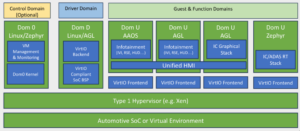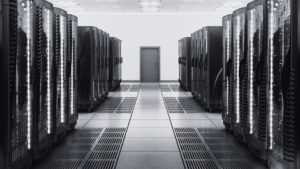
Editor’s note: Rob High is speaking at the Edge Computing Expo[1] event which launches today (February 9) on Covid-19’s impact on the edge computing market. Find out more about his session here[2], while you can register to attend here[3].
—
Rob High, VP and CTO of IBM’s edge computing division, naturally believes the edge market is going to be significant. But how significant? “This market has the potential to be so big, it in some sense is at risk of collapsing under its own weight,” he explains.
With the number of edge devices set to be in the billions – almost making the Internet of Things (IoT) seem like child’s play – enterprises who need to provision, manage and secure these devices could easily become tangled.

“I think the only way that this industry is really going to thrive is for us to start coming together and forming communities around standard practices, around points of commonality that we can both share and leverage to build out an ecosystem of shared value, of value exchange,” says High (left).
Anyone who is familiar with IBM Cloud, and the mantra of IBM’s CEO, Arvind Krishna[4] – as well as his predecessor, Ginni Rometty – will know it’s all about two words: open and hybrid. This extends to the edge as well. Open Horizon[5], the core technology which powers IBM Edge Application Manager, is part of LF Edge after IBM donated it to the Linux Foundation.
“If you combine that with other standards, these are all examples of where I think open source can help us forge communities of commonality, and allow us not only to bring commercial value to that commonality, but to build on that for other things,” says High.
Taking High’s road to the edge
High’s journey to playing a leading role in edge is a highpoint of an almost 40 year career at Armonk. Previously CTO of IBM Watson, High was exploring other avenues to apply artificial intelligence (AI), and mused on the potential of IoT.
“I spent some time with the IoT team, and quickly began to realise that the idea of IoT as it was originally conceived by the marketplace as a whole was a little bit underwhelming,” he explains. “The idea that we can connect a device and collect all the sensor data off that device, and aggregate that back to the cloud, just struck me as being inefficient.
“So with that realisation, I began to look at what we were doing as a company to address that.”
With IoT devices becoming ever more sophisticated, the need for greater data utilisation, through lower latency, became apparent. Analytics can be used to not only process the data, but create feedback which makes users more effective and efficient. There are bonus side effects, says High. Not only is removing the overhead of transmitting data back to the cloud a huge cost benefit, but processing sensitive data closer to the edge enables better protection.
“Software defined products I think are an understated aspect of the edge computing space; where software really defines the capabilities of that product, where software can be a vehicle by which we can enhance the features and value of that device,” adds High.
AI-AI, captain
One fascinating client with whom IBM is working is Promare[6]. The maritime research non-profit is at the heart of a project to create a fully autonomous self-driving vessel which will replicate the voyage of the Mayflower to commemorate its 400th anniversary last September. The ship will travel from Plymouth, England, to Plymouth, Massachusetts later this year, with an ‘AI captain’ at the helm.
“It’s a pretty interesting scientific engineering activity, to simply be able to launch a vessel and basically forget about it, then suddenly discover it again when it arrives at the other side of the world,” says High.
While the feat of an automated ship sailing the high seas is in itself noteworthy, High notes there are many other long-term benefits which could result from a successful voyage. Measuring the salinity and chemical makeup of the oceans, as well as microplastic contamination, without putting sailors and scientists at risk, could be a game-changer. “If we can put an unmanned, self-navigating, self-propelled vehicle out at sea, and it can wander the oceans for weeks, months at a time collecting data, that’s a huge benefit to science,” he says.
It is also a strong example of edge in action. “You don’t want to be shipping a lot of data in real-time back to the shore – you need to do that processing at the edge, you need to get the right software out there onto that vessel and keep it updated,” adds High.
How edge is accelerating amid Covid-19
The use cases do not stop there, however. High notes the example of an automobile manufacturer as an easy edge opportunity to understand. Welding and building automobile frames will, in many modern plants, be done by robots – but to inspect the quality of the weld seam, you have to cut it open. This is naturally both expensive and inefficient – and even if an issue was found, you don’t know whether it just occurred with that one frame.
“We can bring video analytics to a situation like that,” explains High. “We can mount the camera to the robot, have it watch the weld as it’s being performed, and detect the good versus bad quality welds in real-time with a video analytic.”
Again, accessibility and latency are the key, with IBM’s Maximo[7] application suite working around intelligent asset management and predictive maintenance. “If you’ve got 200, 300 or 500 of these robots in your manufacturing line across different sites, that could be a lot of video data and very expensive to take back to the cloud to process,” says High.
High is speaking at the Edge Computing Expo[8] virtual event on February 9-10 around how Covid-19 has impacted the edge space. The pandemic has evidently made a lasting accelerating impact on cloud computing, so is it the same further down the road?
“The pandemic has caused businesses to shift the way that they operate – and the net of that is we have much more digitalisation,” he says. “Digital transformation is accelerating, it’s underway and people who may have been stalling on that before are now compelled to do that faster and better now. Those experiences are going to require localised processing, offline processing… a lot of these experiences generate a lot of data in their own right, and we need to offload that from being a burden on our network activity.
“So edge computing I think is going to be accelerated by virtue of the changes that are occurring in our industries as a consequence of Covid-19.”
Main picture credit: Tom Barnes for IBM
Want to learn more about topics like this from thought leaders in the space?Find out more about the Edge Computing Expo[9], a brand new, innovative event and conference exploring the edge computing ecosystem.
References
- ^ Edge Computing Expo (edgecomputing-expo.com)
- ^ here (edgecomputing-expo.com)
- ^ here (edgecomputing-expo.com)
- ^ mantra of IBM’s CEO, Arvind Krishna (urldefense.proofpoint.com)
- ^ Open Horizon (developer.ibm.com)
- ^ Promare (newsroom.ibm.com)
- ^ Maximo (www.ibm.com)
- ^ Edge Computing Expo (urldefense.proofpoint.com)
- ^ Edge Computing Expo (edgecomputing-expo.com)



